Corporate Guide
History of the Takara Group
-

-
- Prologue
-
The Early Years
1842–1925
Usaburo and Kurakichi
The fateful meeting that launched the history of the Takara Group
-
-
1
Start of sake brewing in Fushimi, Kyoto
-
1842
-
A new member of Fushimi’s sake-brewing community
In 1842, toward the end of the Edo period, Unosuke, the fourth head of the Yomo family, was granted a license to produce and sell up to 180 koku (32,400 liters, at 180 liters per koku) of refined sake per year in Takenaka-cho in Kyoto’s Fushimi district, thus becoming the 28th member of Fushimi’s sake-brewing community. Production at the time consisted of roughly 200 koku of refined sake (seishu) in winter and 300 koku of a sweet drink made from fermented rice (amazake) in summer.
1897
-
Registration of the Takara trademark for mirin
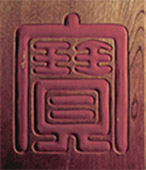
After a sake production hiatus, in 1864, the younger Unosuke, the fifth head of the family, now an adult, once again began brewing shochu, mirin, and shirozake. Through extraordinary effort, he developed the family business, and by the middle of the Meiji era (1868-1912), production had grown to 1,000 koku, and sales channels had expanded from Fushimi and its suburbs to Osaka and Shiga. In 1897, the company was the first to register the "Takara" trademark for mirin (photo).
-

-
-
1
-
-
2
General partnership and expansion to Tokyo
-
1905
-
The establishment of Yomo GMK
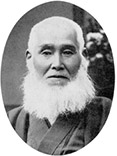
The Yomo family's business continued to expand, and in 1905, at the height of the period of prosperity that followed the conclusion of the Russo-Japanese War, Yomo GMK was finally established. Although Yomo GMK was originally headed by Unosuke’s third son, Hidesaburo, a little more than a year later he turned over the reins to Usaburo Yomo (photo).
-

1913
-
Appointed as a purveyor to the Japanese Imperial Household Agency

Yomo GMK focused on expanding its sales network, and in 1910, five years after the company's establishment, it entered the Tokyo market with its main product, mirin. Tokyo's mirin market was dominated by famous brands at the time, but Yomo GMK salesmen visited customers and prospects with perseverance. That enthusiasm and effort paid off, earning "Takara Mirin" high praise as an excellent mirin brand second to none, and in 1913, Yomo GMK had the honor of being appointed as a purveyor of mirin to the Imperial Household Agency. (Photo: Early Showa period poster publicizing Yomo GMK as a purveyor to the Imperial Household Agency)
-

-
-
2
-
-
3
The advent of a new-style shochu
-
1912
-
Becoming an exclusive distributor in the Kanto region

After mirin, Yomo GMK set its sights on a new type of shochu that is the precursor of the current korui shochu. Hinomoto Shochu*1, a brand of shochu developed in Uwajima, Ehime by Nihon Shusei surpassed the conventional kasutori shochu*2 in quality at a lower price, and was rapidly gaining popularity. Yomo GMK's negotiations with Nihon Shusei led it to become an exclusive distributor of this new-style shochu in the Kanto region. In 1912, when this new-style shochu entered the Tokyo market under the "Takara" trademark, it immediately swept the market, and sales were so high that supply could not keep up with the flood of orders.
(Photo: Signboard of "Hinomoto Shochu") -

-
- *1 Hinomoto Shochu
- A potato-based blend with water added to the alcohol and blended with kasutori shochu*2.
- *2 Kasutori shochu
-
This is shochu made by redistilling lees left over from the production of refined sake.
At the time, it was necessary to purchase sake lees from sake brewers in order to produce kasutori shochu.
1916
-
Kurakichi Ohmiya, father of the new-style shochu, joins Yomo
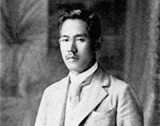
Sales of the new-style shochu got off to a good start, but in 1916, Usaburo Yomo became increasingly interested in producing this shochu in house, and thus invited Kurakichi Ohmiya (photo), the production engineer and plant manager who had developed Hinomoto Shochu. Kurakichi Ohmiya, who was 30 years old at the time, had aspirations of running his own business, but was attracted to the sincere personality of Usaburo Yomo and decided to join his company. Kurakichi himself later described this encounter with Usaburo as "something that was destined to happen," and there is no question that this day changed the fortunes of not just these two men but of Yomo GMK itself.
-

1916
-
Yomo-produced Takara Shochu goes on sale
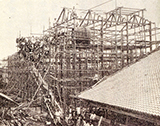
In 1916, Kurakichi Ohmiya joined Yomo GMK and immediately set out to produce a new-style shochu. A new plant in Fushimi, Kyoto, equipped with a state-of-the-art Ilges continuous distillation apparatus, was built, and Takara Shochu, a new-style shochu produced in-house, was launched. Yomo GMK also began producing a new style of mirin, Takara Mirin, using new-style shochu as the base ingredient. Later, in 1918, a second plant was built in Fushimi, and this was followed by a third plant in Fushimi in 1920. (Photo: The second plant under construction)
-

1918
-
Earning fame for non-rice liquor
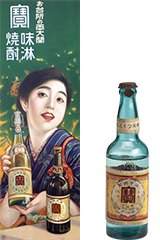
Yomo GMK began many innovative sales practices, resulting in explosive sales of Takara Shochu. When the rice riots of 1918 took place, there was a growing movement against the production of rice-based shochu, but at the time, new-style shochu was made from potatoes. The popularity of shochu was further spurred by the fact that it was widely advertised under the slogan of "Yomo’s shochu is an alcoholic beverage made without rice!" It was also around this time that Yomo GMK began to sell bottled shochu. The idea of reducing the hassle involved in buying and selling at liquor stores, where selling by weight was common at the time, was well received, and the fame of Takara Shochu further increased. (Photos: Poster from the Taisho era and a bottle of Takara Shochu from the early Showa era)
-

-
-
3
-
-
4
Strengthened ties with exclusive distributors in the aftermath of an earthquake
-
1923
-
The Great Kanto Earthquake and Yomo GMK’s immediate response

The Great Kanto Earthquake, which struck Tokyo and its environs on September 1, 1923, left 105,000 dead or missing and destroyed about 110,000 buildings. Kurakichi Ohmiya and his colleagues immediately set out for Tokyo and made contact with each and every exclusive distributor and retail seller of Takara products at evacuation centers in the midst of the burnt ruins to encourage them to resume business as soon as possible. Kurakichi immediately ordered that every last product in the Fushimi warehouse be shipped to Tokyo. When the shipment arrived, even Kurakichi was surprised at how excited people were to receive it, and this immediate response to the needs of people in the afflicted area helped strengthen Yomo’s ties with its exclusive distributors. (Photo: Asakusa, Tokyo, which was destroyed in the Great Kanto Earthquake)
-

1924
-
Construction of the Kizaki Plant and start of production in the Kanto region
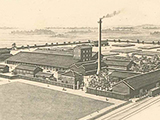
The Great Kanto Earthquake had a significant impact on the distribution of alcohol products. The disaster dealt the death blow to the system of distribution for kudarizake, which had monopolized the distribution of kudarizake (refined sake produced in the Kansai region and shipped to the Kanto region during the Edo period). In its place emerged new types of wholesalers such as local liquor wholesalers and soy sauce wholesalers handling Kanto products. These wholesalers would often contract with a particular brewery to become an exclusive distributor for that manufacturer. For Yomo GMK, which was deftly adapting to changing times and seeking to establish stronger ties with its exclusive distributors in the aftermath of the earthquake, the biggest issue at hand was supplying its products. They were loaded in Fushimi onto ships, horse carts, or other means of freight transport, but the trip to Tokyo was both costly and time consuming, so the construction of a production facility somewhere in Kanto was decided. Thus, in 1924, the year after the earthquake, Yomo GMK began construction of a plant in Kizaki-cho, which is located in the present-day city of Ota, Gunma. In September 1924, the Kizaki Plant (photo) began production with an annual capacity of 30,000 koku.
-

-
-
4

